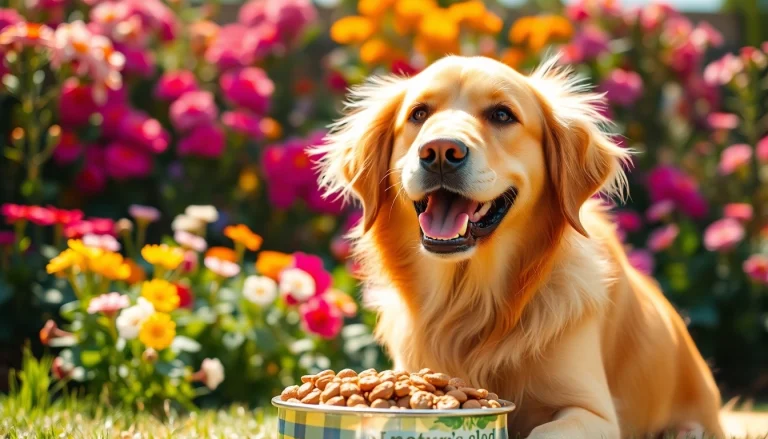
Understanding Single Origin Tea
What is Single Origin Tea?
Single origin tea refers to varieties of tea that come from a specific region, estate, or harvest. Unlike blended teas, which combine leaves from different locations to create a consistent flavor profile, single origin teas celebrate the unique characteristics derived from their place of origin. By sourcing tea from specific gardens or estates, producers highlight the distinctive terroir that influences flavor, aroma, and quality.
Each region has its own climate, soil composition, and cultivation techniques, which all play a significant role in the resultant tea. This ensures that every cup of single origin tea offers a unique flavor experience, reflective of its origins. For those looking to explore the depths of flavor in tea, single origin tea presents an exciting journey through culture, craftsmanship, and the artistry of tea making.
The Importance of Terroir
Terroir is a French term that describes the environmental conditions in which a particular crop is grown. In the context of tea, it translates to the essence of the agricultural environment that imbues the tea with its specific qualities. Factors such as soil type, climate, altitude, and even traditional growing methods contribute to the distinctiveness of the tea produced in a particular region.
For example, teas grown in high altitudes, like those in Darjeeling, exhibit floral and fruity notes, while lower altitude teas may lean towards richer, earthier flavors as seen in Assam. The concept of terroir not only enhances the flavor but also engages tea drinkers to appreciate the heritage and efforts behind their beverage.
Unique Flavor Profiles
Single origin teas are celebrated for their diverse flavor profiles, often categorized into primary types such as green, black, oolong, and white teas. Each contributes its unique flavor expression based on the region’s characteristics:
- Assam: Known for its bold and malty black teas.
- Darjeeling: Often referred to as the ‘Champagne of teas’, famous for its light, floral flavors.
- Yunnan: Celebrated for its rich, deep flavors and earthy undertones in black teas.
- Uji (Japan): Renowned for its delicate green teas with sweet, grassy notes.
Understanding these profiles assists tea enthusiasts in choosing teas based on personal taste preferences, making the single origin selection a deeply personal experience.
Benefits of Choosing Single Origin Tea
Quality Assurance in Sourcing
One of the most significant benefits of single origin tea is the assurance of quality that comes with sourcing from specific estates. Unlike blends, where quality can vary significantly, single origin teas are usually produced under strict quality control processes. Farmers and producers prioritize maintaining the integrity of their tea through meticulous harvesting, careful processing, and regular quality assessments.
When purchasing single origin tea, consumers can often access information regarding the growing conditions, harvest times, and production methods. This transparency not only enhances the overall tea drinking experience but also fosters trust in the product being consumed.
Health Benefits of Pure Teas
Many studies highlight the numerous health benefits associated with drinking pure, unblended teas. Single origin teas tend to be rich in antioxidants, which are known to combat free radicals in the body, promote heart health, and aid in weight management. For instance:
- Green teas contain catechins, which have been linked to reduced cholesterol levels and improved brain function.
- Black teas offer flavonoids that may help in reducing the risk of stroke and heart disease.
- White teas, often hailed for their delicate flavor and minimal processing, are packed with antioxidants that support overall wellness.
Choosing single origin teas allows consumers to benefit from the unique compounds and properties associated with the specific variety, providing a range of health benefits from each cup.
Environmental Impact of Single Origin Sourcing
Single origin tea also promotes sustainability practices by supporting local economies and maintaining traditional farming methods. By purchasing tea from specific estates, consumers contribute to the economic stability of those communities, leading to better farming practices and environmental conservation.
Many tea gardens implement organic practices, reducing the use of harmful pesticides and supporting biodiversity. This focus on sustainable methods not only preserves the quality of the tea but also contributes positively to the surrounding environment. Thus, every cup of single origin tea can be seen as an investment in sustainable agriculture.
How to Brew Single Origin Tea for Optimal Flavor
Choosing the Right Water Temperature
The brewing temperature of water significantly affects the extraction of flavor compounds from tea leaves. Different types of tea require varying water temperatures for optimal brewing:
- Green teas: Brew at 160-185°F (70-85°C) to avoid bitterness.
- Black teas: Steep at 200-212°F (93-100°C) to maximize flavor.
- Oolong teas: A range of 180-200°F (82-93°C) can enhance their complex flavor profiles.
- White teas: Use water around 160-185°F (70-85°C) to preserve their delicate nature.
Investing in a temperature-controlled kettle can significantly improve the brewing experience and ensure that the unique flavors of single origin teas are fully expressed.
Understanding Brewing Times
In addition to temperature, brewing time is crucial in achieving the perfect cup of tea. Oversteeping can impart bitterness, while understeeping may lead to a lack of flavor. Each tea type has its ideal brewing time:
- Green tea
- Black tea: 3-5 minutes
- Oolong tea: 3-5 minutes
- White tea: 4-5 minutes
Timing your steeps may require some experimentation, but finding the right balance can unlock the full potential of the tea’s flavors and aromas.
Creating the Perfect Tea Setup
Creating an optimal brewing environment is essential for enjoying single origin tea. Here are some tips:
- Choose the right teaware: Select a teapot or infuser that allows for sufficient space for leaves to expand and release their flavors.
- Use filtered water: The quality of water affects taste. Always opt for fresh-filtered water free from impurities.
- Ensure proper measurements: Using approximately one teaspoon of loose leaf tea per cup of water typically yields the best results.
- Mind the freshness: Use freshly opened packs of tea, as older leaves may have lost their intensity.
By paying attention to these details, you can enhance your single origin tea experience, allowing the flavors to shine.
Top Regions for Single Origin Tea
Famous Tea Estates in Asia
Asia is renowned for its rich tea-producing regions. Some of the most celebrated estates include:
- Darjeeling, India: Known for its muscatel notes and outstanding quality.
- Assam, India: Produces rich, robust black teas with malty flavors.
- Uji, Japan: Famous for high-quality green teas, particularly Matcha and Gyokuro.
- Hunan, China: Home to some of the best oolong teas known for their multidimensional profiles.
Each of these regions has its own unique allure, providing tea drinkers with endless possibilities for exploration.
Emerging Regions for Quality Teas
While traditional tea regions dominate the market, several emerging regions are proving their worth:
- Nepal: Gaining recognition for its delicate and floral teas similar to those of Darjeeling.
- Taiwan: Increasingly popular for its exceptional oolongs, particularly High Mountain teas.
- Kenya: Emerging as a strong player in black tea production with unique flavor profiles.
These regions are worth exploring, as they offer quality teas that rival more established locales.
Comparing Regional Characteristics
When exploring single origin teas, it’s important to consider distinct characteristics:
- Flavor Complexity: Regions high in altitude (like Darjeeling) often produce more complex flavor profiles, while lower altitudes may result in more robust flavors (like Assam).
- Production Techniques: Different regions have various traditional processing methods that can dramatically affect flavor, aroma, and appearance of teas.
- Cultural Influence: The culture and traditions of tea drinking in a region often reflect in the tea’s preparation and enjoyment, offering deeper connections to the origins.
Understanding these regional characteristics not only enchants the taste but also enriches the cultural appreciation of each cup.
Common Myths and Misconceptions
Single Origin vs Blended Tea
One of the most common misconceptions is that single origin tea is inherently better than blended teas. While single origin teas provide distinct flavors unique to a specific region, blended teas can offer a balanced consumption experience, enhancing flavors that might not stand out on their own. Blends are crafted for consistency and to appeal to mass preferences, making them a staple for many tea drinkers.
Both styles have their merits, and the choice ultimately depends on personal taste preferences and the drinking experience one desires.
Dispelling Flavor Myths
Another myth is that all green teas are bitter and unpleasant. The bitterness can arise from over-steeping rather than the tea itself. Proper knowledge about the right brewing temperatures and times can ensure that green teas—often made from high-quality fresh leaves—can be smooth, sweet, and complex.
Similarly, misconceptions about black teas being overly strong can interfere with the enjoyment of milder varieties. Educating consumers about varied flavor profiles among single origin selections is essential.
Understanding Pricing: Quality vs Cost
Pricing is frequently a sensitive subject in the tea world. Many consumers mistakenly assume that higher prices guarantee a better taste. While it’s true that superior craftsmanship and growing conditions come at a cost, several factors influence tea prices, including market demand and production volumes. Passionate producers can offer exceptional quality without extreme price tags. Ultimately, the value of a tea should be assessed through taste, quality, and the experience it offers rather than solely its price point.




